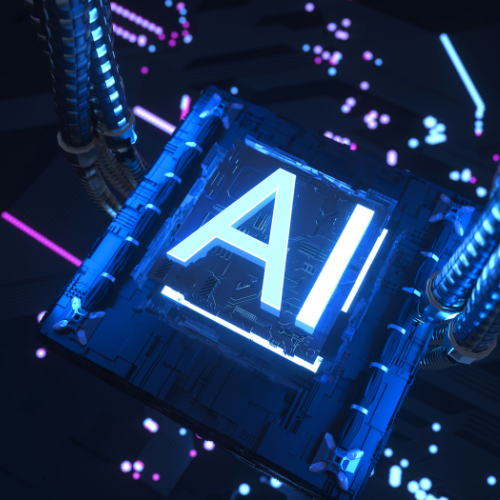AI for Disability Inclusion: Friend or Foe?

Bridging the Gap: How can AI play a part in revolutionising Disability Inclusion
Imagine a world where technology anticipates your needs, not the other way around. A world where daily tasks, from navigating public transport to communicating effectively, are made easier through the power of artificial intelligence (AI). This isn’t science fiction – it’s the future Australia is hurtling towards. Get Skilled Access is a champion for disability employment in Australia, and we recognise AI has the potential to be a game-changer for inclusion.
But hold on a minute. Before we embrace AI as a magic solution, let’s acknowledge it’s a powerful tool and like any powerful toolkit has the potential to be used for good or bad. There’s a lot of hype surrounding AI, and some of it might be unrealistic. Early AI adoption needs careful consideration to ensure it benefits everyone, not just the technologically advanced.
The Potential Benefits of AI for Disability Inclusion
- Assistive Technologies: AI-powered tools are already pushing the boundaries of what’s possible. Imagine a brain-computer interface that allows someone with paralysis to control a robotic arm with their thoughts, enabling them to perform delicate tasks or even play a virtual reality game. We’re moving beyond voice commands and smart prosthetics – AI is on the cusp of creating a new level of human-machine integration.
- Communication Aids: Speech-to-text and text-to-speech conversion powered by AI can bridge communication gaps. People with speech disability can express themselves clearly, while those with visual disability can access information through audio descriptions.
- Smarter Workplaces: AI can personalise work environments, making them more inclusive for people with disability. For instance, AI-powered ergonomic software can remind you to take breaks and adjust your posture or recommend assistive technologies that can make specific tasks easier.
- Smart Learning: Students with learning disability often have unique learning styles and require different approaches to grasp information. AI-powered tutors can personalise learning experiences by tailoring content, pacing, and feedback to each student’s specific needs. Imagine an AI system that can identify a student’s strengths and weaknesses, then adjust the difficulty level, provide alternative explanations, or offer additional practice exercises. This technology has the potential to revolutionise education for students with learning disability, allowing them to learn at their own pace and reach their full potential.
These are just a few examples, and as AI continues to evolve, the possibilities are endless.
But AI isn’t a silver bullet. Here’s where we need to tread carefully.
The Challenges of Early AI Adoption
- Bias and Discrimination: AI systems could perpetuate biases if the data used to train them isn’t inclusive. Imagine a facial recognition system that struggles to identify people with certain facial features, potentially impacting access to essential services.
- Affordability : Not everyone has access to the latest AI-powered devices and softwares. The cost of these technologies can be a barrier, and the digital divide can further marginalise people with disability.
- Early Adoption Challenges: AI is still under development, and some of the promises touted may be a long way off from becoming reality. It’s important to temper expectations and ensure that people with disability aren’t left behind in the rush to embrace AI.
Building an Inclusive AI Future
So, how do we ensure AI becomes a force for good, not exclusion? Here are some key considerations:
- Inclusive Date: We need diverse datasets that reflect the vast spectrum of human ability. This means involving people with disability in the development and testing of AI systems.
- User Centric Design: AI should be designed with the needs of people with disability in mind. This means building accessibility features from the group up, not as an afterthought.
- Affordability and Accessibility: AI-powered technologies should be affordable and readily available to everyone. Government initiatives and industry collaboration can play a crucial role in achieving this.
The Future of Disability Inclusion is Intelligent and Inclusive
AI presents a unique opportunity to create a more accessible and equitable world for Australians with disability. By working together, we can harness the power of AI to break down barriers and unlock a future brimming with possibilities. However, we must approach AI adoption cautiously, ensuring it is inclusive, ethical, and addresses the challenges outlined above.
The Diversity Council Australia’s Inclusive AI Recruitment Hub is a fantastic resource packed with information on using AI responsibly and ethically in the recruitment process. This hub provides guidance for employers on ensuring their AI recruitment practices are inclusive and don’t disadvantage people with disability.
Get Skilled Access: Leading the Charge
Get Skilled Access is at the forefront of promoting disability inclusion in the Australian workforce. By fostering collaboration between employers, people with disability, and organisations like ours, we can ensure that the future of work is truly inclusive. AI presents a unique opportunity to create a more accessible and equitable world for Australians with disability. By working together, we can harness the power of AI to break down barriers and unlock a future brimming with possibilities.
